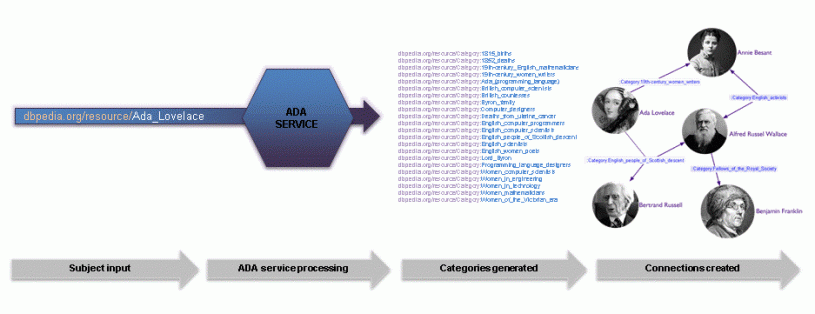Nominees

ADA is a new way to navigate the archive of programmes from the BBC. It uses linked data to surface semantically linked recommendations for related programmes.
Our current archive holds over 30,000 permanently available pieces of audio/visual content which is navigable by date or programme brand. While we have created some manual aggregations of related content, there is currently no way to browse by subject area. Given the enormous range of subjects our programmes cover (including the A470 (a road in Wales), Munch's “The Scream”, virtue, Canada geese, existentialism and the Battle of Bosworth Field) it would not have been viable to attempt to create and maintain an ontology to cover everything. Any hierarchical navigation method, as with searching, would presuppose a knowledge of the subject area and an idea of what the user was looking for and given the nature of our content, that would leave most of it still undiscovered. Following further research on audience interaction we found that spending time on finding a single ‘correct’ matching category would actually be less useful for audiences than presenting a large number of related links. Therefore the aim was to offer a large number of relevant micro-categories, each of which would contain a small collection of interesting programmes as onward journeys. With limited resources we knew these collections and categories could not be manually curated, just as we could not manually maintain a hierarchical structure, and crowdsourcing efforts have had inconsistent results, so an already existent open dataset was required. During the course of investigation we tried the categories linked to pages in Wikipedia. These fitted our requirements extremely well: they are varied, with an average of 7 categories per subject, and are added because they are felt to be relevant, and furthermore have not been removed by anyone else who disagrees with that assessment, so they have a certain level of quality control built in.
Using these categories, it was only necessary to attach the subject to the programme and the categories could be automatically extracted from the subject. The ADA service then matches up these categories to other subjects with the same categories and offers the linked content as a journey from the original piece of content. By using the category name in the link text we were able to provide context around the journey, and also offer aggregations of content around each of the categories, allowing users to navigate through our archive by subject in a way that had never been possible before.
More details can be found in the demo document: http://2016.eswc-conferences.org/sites/default/files/papers/Accepted%20Posters%20and%20Demos/ESWC2016_DEMO_ADA.pdf
